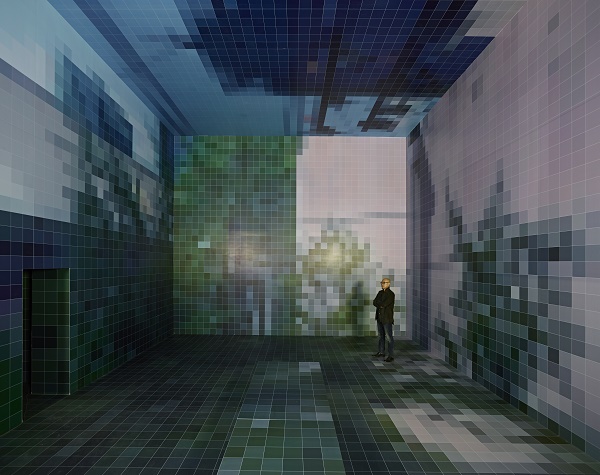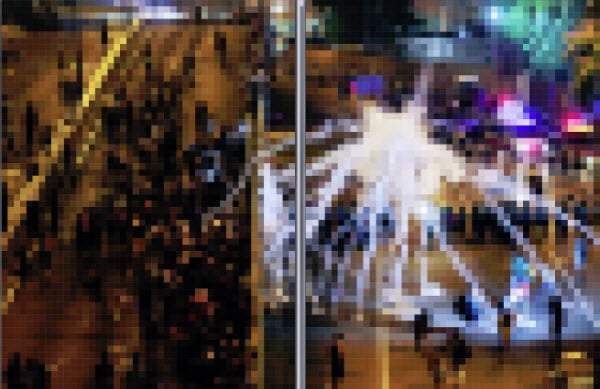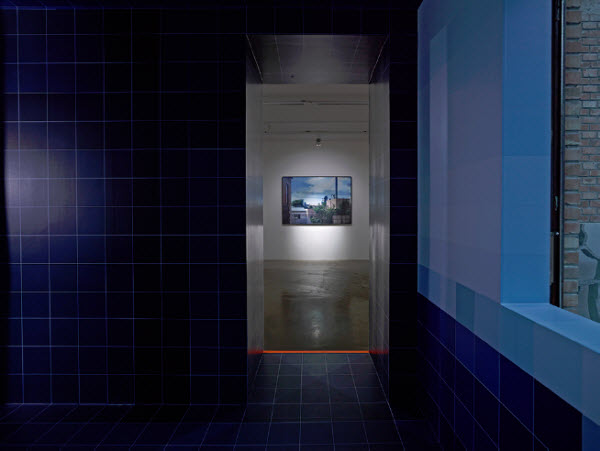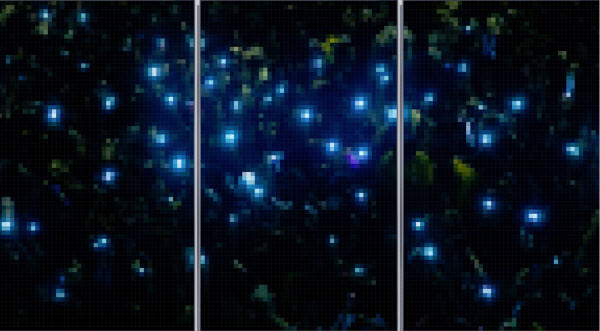Art & Exhibitions
See Wang Guofeng’s Immersive Pixelated Installations
The installation "probes" the system of image distribution in mainland China.

Image: Courtesy of De Sarthe Gallery
The installation "probes" the system of image distribution in mainland China.

Alyssa Buffenstein

Scrolling through endless Facebook and Instagram feeds gives internet users the illusion that we have access to any image we can imagine. Google street view allows us to tour the world without closing our laptops, and the proliferation of smartphones means we can document every waking moment in photo or video. Chinese artist Wang Guofeng’s two current shows, “Probe” at the De Sarthe Gallery Beijing, and “Probe II” at the De Sarthe Gallery Hong Kong slash that illusion, turning photographs sourced from the internet into pixelated abstractions.

Wang Guofeng, Pixelated 2014 No.11 (2014)
Image: Courtesy of De Sarthe Gallery
Wang Guofeng appropriates images, but not with the banality of Jeff Koons or Richard Prince. Rather than a screenshot and an inkjet print, the artist found low-res images—the only kind available on mainland China’s free web—of Hong Kong protests and blew them up to render their pixels large squares, making the original images unrecognizable. The final work looks like a cross between a blurred-out naked body on network television, and a millennial update to an ancient Roman floor mosaic.

Installation view of Wang Guofeng’s “Probe” (2015)
Image: Courtesy of De Sarthe Gallery
According to the press release, “[the artist] was inspired to work on the resolution of the image as a way to question the clarity of the information the pictures convey. He is using images charged with meaning and taking away the ability to read that meaning, putting the image itself as a concept the center of his approach.”

Wang Guofeng, Pixelated 2014 No. 6 (2014)
Image: Courtesy of De Sarthe Gallery
The images are intentionally blurred to the point of unrecognizability, and they become a spatially confusing, digitally-beautiful immersive environment. Aside from literally blurring the found images, the aesthetic pull of the works blurs the political meaning, too. With such potential to “Probe” the distribution, censorship, and access to politically-loaded images, it would be a shame for a viewer to miss the content entirely because they were distracted by the pretty colors.